SamplePages
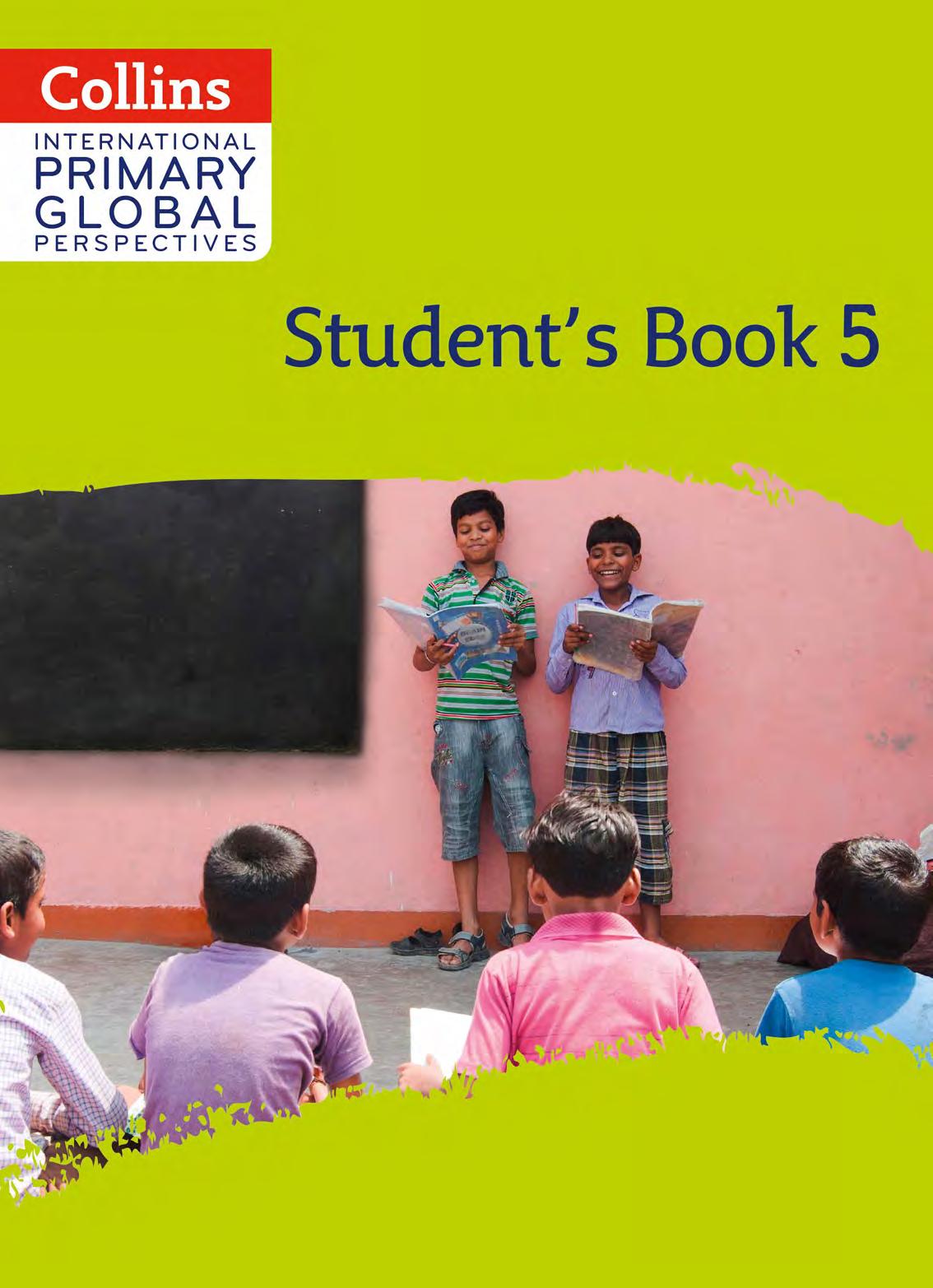
Introduction: How to use this book
Unit1:
prepared!
causes
it clear!
Unit1 Final task:
Reflection: How successful
Listen up!
your voice
it fair?
survival plan?
yourself in their shoes!
we all agree?
me how…
How do you feel about change?
What change do they want?
Unit2 Final task: Give a presentation about
Kindness Day
Reflection: How successful was our presentation about
Day?
Unit3: Let’s not waste it!
What a waste!
food waste
global
Contents
v
Emergency! Emergency! 1 1.1 Don’t panic 2 1.2 Natural disasters 4 1.3 Imaging weather 6 1.4 Emergency response 8 1.5 Different views 10 1.6 Be
12 1.7 What
an earthquake? 14 1.8 Keep
16
Create a survival plan 18
was our
20 Unit2:
21 2.1 Find
22 2.2 Is
24 2.3 Put
26 2.4 Do
28 2.5 Actively listening 30 2.6 Tell
32 2.7
34 2.8
36
World
38
World Kindness
40
41 3.1
42 3.2 Reduce
44 3.3 A
problem 46 3.4 Attitudes 48 SamplePages
Reflection:
Refl
Unit4
ection: How
3.5 Surveying food waste 50 3.6 Let’s investigate! 52 3.7 The food journey 54 3.8 Super food savers 56 Unit3 Final task: Prepare an awareness campaign about food waste 58
How successful was our campaign about food waste? 60 Unit4: Why do you want that? 61 4.1 How do you choose things? 62 4.2 How do you shop? 64 4.3 Who can I trust? 66 4.4 Reviewing trust 68 4.5 Reading pictures 70 4.6 The value of pictures 72 4.7 Asking the right questions 74 4.8 Know your business 76
Final task: Write a report evaluating an advert 78 Refl
successful was our report? 80 Unit5: Get connected! 81 5.1 Schools in the past 82 5.2 What’s changed? 84 5.3 Tomorrow’s classroom 86 5.4 Education is the future 88 5.5 Teachers of the future 90 5.6 Facing challenges 92 5.7 How is technology used? 94 5.8 Technology questionnaire 96 Unit5 Final task: Investigate and report on the future of technology in schools 98
ection: How successful was our survey? 100 Glossaryofkeyterms 102 Acknowledgements 104 SamplePages
3Unit Let’s not waste it!

you

What do
know? • How much food is wasted every year? • What happens to food when you throw it away? • Why does food waste affect our climate? In this unit, you will: • use different ways to communicate important messages about food waste • design questionnaires to research a local issue • explain how infographics can be used to spread awareness • work in groups to solve food waste problems.
41 SamplePages
3.1 What a waste!
1 What do you know about food waste? Talk about the topic in


Then
what you know
know
want
know
learned
2 What do you want to know? Add your questions to the ‘W’ column on the chart.
3 Read the text. Does it answer your questions about food waste?
What a waste!
Many of us don’t have to worry about where our next meal will come from, but why do some people still go hungry? The world grows enough food to feed everyone in the world, yet not all the food produced makes it on to people’s plates. A lot of food gets wasted. It is thrown away and ends up in landfill. Food takes up more space than anything else on a landfill site. We throw away about 30 40% of all the food we grow. We need to throw less away. Farmers should try to grow only what they can harvest. Food should be stored and transported carefully so it does not get damaged. Shops, homes and restaurants should use and buy only what they need.
Throwing away food is not just a waste of money. It is bad for the environment too. The gas made by rotting food is called methane, and it harms our planet. It is a greenhouse gas that traps heat around Earth. It stops it escaping to space. This causes climate change and global warming. Throwing away food also wastes natural resources. Energy and people are needed to make, store, transport and cook food. It is important to sort out the food waste problem. If food is not needed, it can be reused to reduce the damage to the planet. It could be used as compost or burnt for energy.

SamplePages
pairs.
copy the KWL chart and write
in the K column. ✓ Research ✓ Analysis K I
W I
to
L I
42
We waste food.What happens to food
is usually crushed into
buried in land
smell
food to landfill

the information from the ‘L’ column here in the text you have just read.















at the questions you wrote for Activity 2. Can you find answers in the text? Write any answers in the ‘L’ column of your chart in note form.
the note-taking tips to help you.
any other information
have learned from the text.
questions in your chart
not been
Talking point
What did you learn about note-taking today?
good were you at making notes?
yourself
ranking of
to




























, where

Top tips
Note-taking tips
complete
own words,
4 Add to your KWL chart. K I know W I want to know L I learned
we waste? 30–40%
a Find
b Look
Use
c Record
you
d What
have
answered?
How
Give
a
1
5
5 is the best.
• Use single words or short phrases. • Do not write
sentences. • Record important facts. • Use your
if possible.
Waste
small pieces and
fills. Landfills are ugly and
bad. 43 SamplePages
3.2 Reduce food waste

1 Read the text. Rewrite the actions in bold to show a different consequence. Use the example to help you.
Natalya and Anoushka buy some fruit. One banana has gone brown, so they throw it away. The children prepare a fruit salad using one banana, one apple and half the melon. It looks delicious so they take a big helping. They can’t finish everything on their plate, so they throw half an apple into the bin. The rest of the melon is left out on the side and spoils.
✓ Research ✓ Analysis
One banana has gone brown, so they throw it away.
One banana has gone brown, so they use it to make a milkshake.
2 Identify actions to reduce food waste.
a Explain these actions to reduce food waste in your own words.
use before freeze food compost

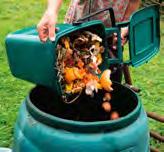
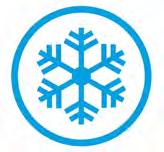
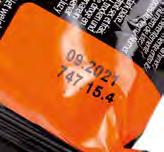
take small portions only buy what you need
b Which of the actions do you do in your home?
3 Natalya’s school is researching food waste. Her teacher has asked her to keep a log about food waste.

Food waste log
DayMealFood
Key term
log: a record of all details and events relating to a particular thing
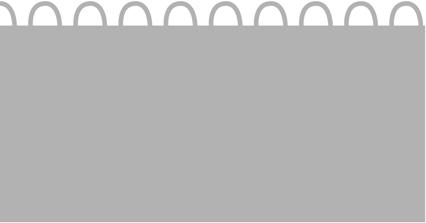
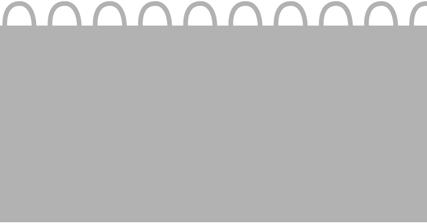
for waste
Mondaybreakfastbreakfast cereal½ cuplate for school
cupgone brown
cuptoo much
cupovercooked
Tuesdaybreakfastbreakfast cereal½ cuplate for school
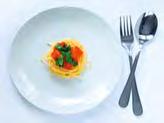
productAmountReason
snackbanana1
lunchrice½
lunchcarrots1
44 SamplePages
a What information
b
c
one thing
one action
at a
type
food
she
notice
food waste habits.
reduce her food waste.
Natalya’s
Monday Tuesday
a























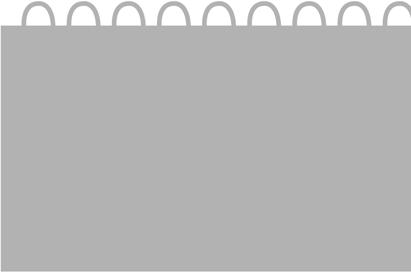
Reason for waste
the questions.
• What food type is wasted most?
• How many cups of food does Natalya waste on Tuesday?
• What is the most common reason for her food waste?
b Complete the table on the worksheet



show Natalya’s food waste over the week.
5 Read the statement Natalya wrote about her food waste habits. Then complete the tasks.
I wasted a total of 3½ cups of grain on Monday and Tuesday. This was because my portions sizes were too big. If I take smaller portions, I will waste less food.
Key Reasons for food waste:
P = portion size (too much)
S = spoilt food
D = didn’t like Food types: grains fruit vegetables dairy protein foods
a Write two more statements using information from your research record to explain your







ndings.
b Suggest an action to help Natalya.
How useful did you
for recording your notes?
does
record?
Write
you
about Natalya’s
Name
she could take to
4 Look
different way to present the information in the
log.
Food
Amount of
wasted (cups) ½ 1 ½ 1 ½ 12
PSPDPDP
Answer
to
fi
find the key in Activity 4
Talking point
45 SamplePages
3.3 A global problem
1 Can you eat the stickers on fruit?
The stickers on fruit are edible.

a Take a class vote.
b Who would you trust to give you this information?
c How could you find out if this information is true?
2 Look at this food fact.
Read about the author.
Analysis
Did you know that 33% of all food produced was wasted in 2022?
Professor Nadia works as a researcher for Global Food Waste Warriors. The goal of Global Food Waste Warriors is to make positive changes in food waste all over the world. Nadia is one of a team of researchers. They raise awareness of the problem. They educate people. They share practical, creative solutions to help everyone change their behaviour to reduce food waste. They organise events to inform, share recipes and provide ideas for schools.
SamplePages
a Why do you think the author shared this food fact?
b Read the tips about how to check information for research. Check the reliability of the food waste fact using the information given.
Top tips
How to spot reliable sources
• The information should be up to date.
• The author should be a trusted authority on the subject you are researching.
• The sources the author used should be easy to find, clear and unbiased.
• You should be able to find the facts in other sources.

✓
✓ Evaluation
46
Actions to





of people have no leftovers

they eat out (up from

National Environment

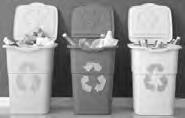
and



























produced this
Attitudes
the Top
at the full infographic on the worksheet.
survey compares habits between 2020 and
and discuss a positive change in behaviour about leftovers.
the questions
Talking point
you think this information could

the worksheet.
Key term






a way to
nd out information from a lot of different people by asking them all the same
3 Read the information, look at the infographic, then answer the questions. National Environment Organisation EarthDayEveryDay FOOD WASTE HABITS NEOConsumerSurvey2022
reduce food waste 71% of people use up leftovers (up from 58% in 2020). 64%
when
45% in 2020).
towards food waste 8 out of 10 people don’t like uneaten food being thrown away. 8 out of 10 people know that food wasteisbadfortheenvironment. The
Organisation (NEO) is a public national organisation. It is responsible for helping to build a clean, sustainable environment for present and future generations. Do
be true everywhere in the world? Discuss how you could find out.
survey:
fi
question a Who
information? Use
tips to decide how reliable the source is. b How did the author get these facts? 4 Read
respond. a Look
The
2022. Find
b Answer
on
47 SamplePages
1 Read and respond.
Plan meals.
Buy what you need.

Check dates.

Top tips to avoid food waste

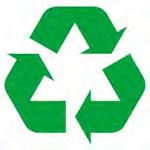
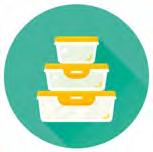
Store food carefully.
Save what you don’t eat.
Cook what you can eat.
Recycle leftovers.
a Choose one of the tips. Explain how it reduces food waste.
b Make a list of reasons why people might not change their food waste habits.
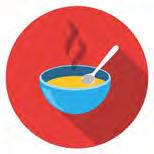

c How could you find out why some people have bad food waste habits?
2 Look at the food waste word cloud.

SamplePages
3.4 Attitudes
✓ Analysis ✓ Evaluation
48
a Read about why people use word clouds. Why are some words bigger than others?
Word clouds
Data visualisations (like charts, graphs and infographics) can quickly and simply show links between numerical (number) data. If the information collected is mostly text, however, showing these connections can be more difficult. Word clouds help researchers understand patterns in their data. Word clouds work in a simple way: the more a word appears in a text, the bigger and bolder it appears in the word cloud.
b Write down the five most important words in the word cloud.
3 Read about the London Environment Institute. Then answer the questions.
London Environment Institute: using science to make a better tomorrow
We are an international not-for-profit research and policy organisation based in the UK. Our researchers are international experts in environmental science. Our research is used to advice policy-makers in government. We find and offer solutions for the environmental challenges faced by different countries and the world as a whole. We want to build a better tomorrow.
a What is the London Environment Institute? Where is it based? What does it do?
b Do you think this organisation is a reliable source of information on food waste? Give reasons for your answer. Use the words in bold to help you.
4 The London Environment Institute carried out some research to understand why people waste food. They used the responses to their survey to make a word cloud. Look at the word cloud on the worksheet, then complete the tasks below.
a Match the words with their meaning.
supporting factor motivating factor barrier







SamplePages







an obstacle that stops you doing something a reason to do something something that helps you to do something
b Use the information to complete the gap-fill on the worksheet.




Talking point









































Compare the infographic from Lesson 3 with the word cloud. Which information do you find easier to analyse?

49
3.5 Surveying food waste
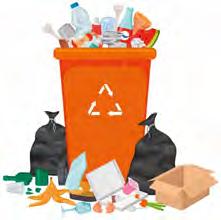
1 Why do you think food is often wasted in schools?
2% of food waste in the USA comes from public schools.
16.5 kg per student per year
2 Read this comment by children at a primary school.
Too much food is wasted in our school. We have learned this is bad for our planet. We need to do something about it.
a What do the students need to find out to solve the problem of food waste?
b Look at the notes the students have made. Suggest a research question.
c Look at the stages of designing a questionnaire. What order should they go in?
Test questions: Try out the questionnaire on a small group.
Increasing lunch times by 10 minutes cuts food waste by a third.
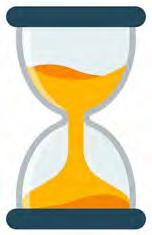

Source: 2022 National Farm to School Network
Key terms
questionnaire: a set of questions created to find out what people think about a topic
investigation: the process of collecting, analysing and interpreting data
Define the problem
Purpose: Reduce foods waste
Target audience: Children in school
Use: To raise awareness and change habits
SamplePages







Want to know: The reasons food is wasted in school
Write the questionnaire: Write questions for the investigation.
Plan the investigation: Give details of the process. Decide how information will be collected, analysed, and interpreted.
Question check: Check that questions are suitable and well written.
Define the problem: Decide what you want to find out. Write a research question.
✓ Research
50
3





























Study the students’ plan for the investigation. Find the information in the planning sheet that explains who, how, why, where and what they will ask.
Investigation planning sheet
What is the purpose of the investigation?
We would like to understand the food waste problem in our school.
We want to find out…
The reasons that children waste food at school.
Our research question is…


Why do children waste food at our school?
We will collect our data by observation/questionnaire.
We will question 50 people.
We will ask… children aged 7 or over
We will collect data by… asking children face to face.
We will conduct our investigation in (place)… the lunchroom.
We will record our data by… completing questions on a questionnaire.
The information will be used to… raise awareness and change habits.
4 Choose the best questions.
a Should the students write open or closed questions? Use the key terms and examples to help you decide.
b Help the group choose good questions for the questionnaire. Sort the questions on the worksheet into closed or open questions.
SamplePages










Talking point
What have you learned about choosing questions for questionnaires?
Key terms
open question: a question where the person asked can give any answer they want; open questions often ask for reasons, explanations and descriptions closed question: a question where the person is asked to choose from one of several given answers; this makes information quicker to collect and the limited choice makes responses easier to analyse
51
3.6 Let’s investigate!
1 Look at the picture.
a
b
is the boy
other ways
c
and
do you think
Food waste questionnaire
What did you throw away today?
(Tick all the responses
apply.)
Do you have school lunches? (circle)
Do you like school lunches? Choose one.
Do you get the right amount of food? Choose one.
Did you know that food waste causes climate change? (circle)
Would you use a compost bin at school? (circle)
a What is the research question?
No
No
What
with the clipboard doing?
What
can data be collected?
What
are the advantages and disadvantages of each method of data collection? 2 Read
respond.
Why do children waste food at our school?
that
fruitsvegetablesgrainsproteindairy
Yes / No
Yes /
Yes /
✓ Research ✓ Analysis 52 SamplePages
b
the notes
they
many children
was the total amount




















































at the results
School canteen
children every lunchtime
periods
30 minutes
4 Look at the responses to the other questions and complete the data collection.
a Record the information from the questionnaire into the tables on the worksheet.
b Make a chart or graph to show the results for each question.
Explain your results. Use your chart or graph to help you.
5 Share your results in a report.
a

Write a statement for each question to explain what you found out.
b Use your statements to write a team report of the investigation. Use the checklist for features of report writing to help you.
Talking point
Report features checklist

✓ a title and opening sentences clearly explaining what the report is about
✓ Paragraphs of information for each of the headings










✓ Tables/pictures/diagrams to add information
✓ Facts linked within each paragraph
a conclusion – summary of key points

Factual language
How successful was your team report at answering the research question?
Read
the students made about the investigation, then answer the questions. • Where did
do their investigation? • How
were questioned? • What
of time spent asking questions? c Do you think the children have enough data to answer their research question? 3 Look
the students got for the last question. What did they find out about compost bins? Would you use a compost bin at school? Yes No
c
✓
✓
Checklist
20
3 lunch
–
each 68% Yes 32% No 34 16 53 SamplePages
3.7 The food journey
1 What do you think the phrase ‘fi
2 What happens to food?
to fork’ means?
✓ Collaboration
Communication
✓ Reflection
a Use the diagram to describe each stage of the journey of food.

b Add notes to the food journey diagram on the worksheet to explain each stage.
c Look at the flow chart. Describe how and where food is lost along the way.
On the farm 11% is lost. The farm might grow more food than its workers can harvest.
It might be damaged, when picked.
The wasted food journey
After harvest 8% is lost. Food might be lost because it can’t be stored safely. It might be damaged when it’s moved from the farm to a factory.
SamplePages
At home or in restaurants 10% is wasted. People might buy more food than they need. Food can go bad before it’s used.
In markets or stores 6% is wasted. A store might order too much food and it could go bad before people have a chance to buy it.
d Add notes to the diagram to show how food is lost.
During processing
1% is lost. Some fresh food is thrown away because it is poor quality. It may be wasted if there are problems with machines in the factory.
eld
✓
54
3 Look at this infographic and complete the tasks.









of wasted
a Use the key and image to explain how it is different from the diagram in Activity 2.
b Add more details to your food journey diagram on the worksheet to show how food is wasted.
4 How could you explain this information to young children?
The children in Year 1 are learning about food waste. Their teacher would like your help to explain how food is wasted from field to fork. Your presentation will need to be clear, simple and fun. They would love it if you could use songs, stories or pictures.
a Plan your performance. Use the pictures for ideas. Finish with an action that shows how to reduce food waste.
b Practise your performance!
c Watch the performances. How successful were they? Use the Top tips to reflect on how successful your own performance was.



Talking point












































How successful was your team in communicating your message about food waste?
Top tips
• Keep it short and simple.
• Make it understandable, clear and factual.
• Engage with your audience!
= $50 billion Institutions Homes Factory Restaurants Key Value
food = $25 billionFarm Shops 55 SamplePages
3.8 Super food savers
Meet Captain Greens.
could this character be used to raise

Greens is on a mission.
from land
about
travels the world saving imperfect
kids. She tells
fect ls

waste
Save food, save the planet! It’s Captain Greens…
Hi kids!, It’s Captain Greens here, reporting for duty! Do you know how you can waste less food at lunch?

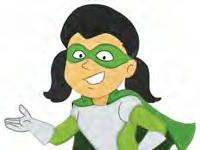
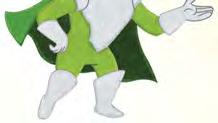
… and her sidekick, Broccoli Woman!

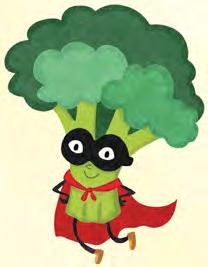
Save money and throw away less! Save the planet and throw away less! By saving food from landfill, you will also save water and soil so we can grow more food.
TIPS TO BE A SUPER FOOD SAVER
• Feed yourself: Eat the food you take. Take only the food you will eat.
• Feed others: Food is for sharing. Share the food you can’t eat. Start a food share table at school to encourage others.
• Feed the soil: Throw food scraps into a compost bin so it can help build healthy soil.
a What is Captain Greens’ message?
b It is important that information can be quickly, easily and clearly understood. Quickly find and write the tips to be a super food reducer.
c Use the communication Top tips from Lesson 7 to explain why cartoons are often used in awareness campaigns.
1
How
awareness? Captain
She
vegetables
fill. She flies into schools to talk to
them
their superhero powers to save food and
less. 2 Read and respond. ✓ Collaboration ✓ Communication ✓ Reflection
56 SamplePages
at the cartoon.
is the message?
is the setting?
It’s too much! I can’t finish!
many characters are there?
are speech bubbles used?
Oh well!
Next time you take only what you need!
Does this girl know how be a super food reducer?
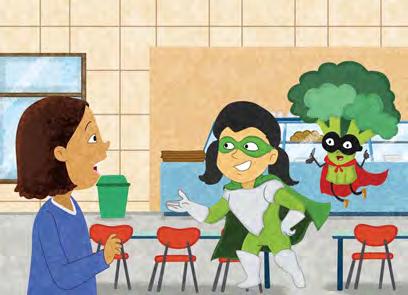
Why don’t you compost your waste?
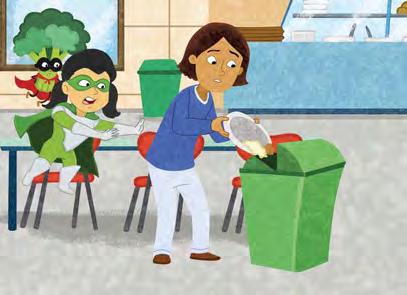
Stop!
5
Thanks for reminding me!






















































I will take less next time!
4 Work in teams to create a cartoon about food waste. You will each draw one frame of the story. You will need to communicate your ideas clearly before you start. After you have agreed your plan, you will not be able to discuss your ideas with members of your team and you will need to work at a distance from your team mates.

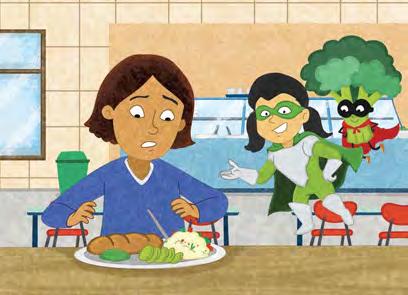
a What do you need to decide before you start?
SamplePages









b Agree on your ideas and write them down. Use the questions in Activity 3 to help you. What will happen? Sketch the story.
Now create your cartoon. Draw your own picture without talking to other members of your team. Then put your drawings together to tell the story.
Talking point
How could you improve communication in your team?
3 Look
Answer the questions. • What
• What
• How
• How
57
task: Prepare an awareness campaign about food waste
the final task
discuss the question.
in teams to investigate the food waste problem in your school. Use your research to build awareness in your school community
suggest an action
will reduce the problem. You can raise awareness with a poster, lea
cartoon or a performance.
should use facts from your research to support your campaign.
your teamwork
How do you think you will be successful in this task?
the words in bold
2 Share what you know.
What do you know about the food waste problem at your school?

Write a list of ways you could raise awareness about a problem.
Read the top tips for awareness campaigns. Decide how you will present your research
ndings to raise awareness of the issue in your school community.
Top tips
Tops tips to raise awareness
Unit3 Final
Read
and
Work
and
that
flet,
You
Reflect on
skills. ✓ Collaboration ✓ Research ✓ Analysis ✓ Reflection
• Do your research. • Know what you want to do. • Understand your public. • Take ideas from others. • Use a familiar figure to support ideas. • Spread your message widely. • Have fun and engage your audience.
1
Use
to help you.
a
b
c
fi
58 SamplePages
3 Plan your research.
a
Discuss and agree on a good research question for your investigation.
b Write a plan for your investigation, using the investigation planning template from Lesson 5. Remember to include details about how you will present your awareness campaign.
c Compare your ideas with the food waste questionnaire investigation you explored earlier. How will you need to change the questions to suit your plan?
4 Write your questionnaire. When you have finished, check to make sure your questions match your purpose and the information you need.
5 Conduct your research.
a
b Complete your investigation.
c
Organise your team to collect, record and analyse your research data.
Record and analyse your results.
d Discuss your findings.
6 Communicate to raise awareness.
a
• Give a clear, simple message to raise awareness of the issue
• Suggest a positive action to reduce food waste
• Use facts to support your actions
• Engage your audience
b Create your awareness campaign.
c Present your awareness campaign with other groups.
SamplePages
Review your awareness campaign plan. Agree how you will use your research to raise awareness.
59
Reflection: How successful was our campaign about food waste?
a Complete the final task checklist. Use the worksheet.
b Share your checklist with your team. Do you all agree?
Final task checklist
We provided facts to support our actions.
Our awareness campaign was clear and engaging.
The action made a positive difference to a local issue.
Team members contributed equally to the task.


c Take it in turns to say what you did to help the team. Do you all agree?
d Reflect on your team’s performance. Answer the questions on the worksheet.
Before you go
Discuss these questions in pairs.
SamplePages









































































































































60

























































































